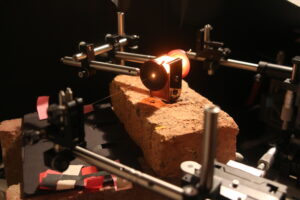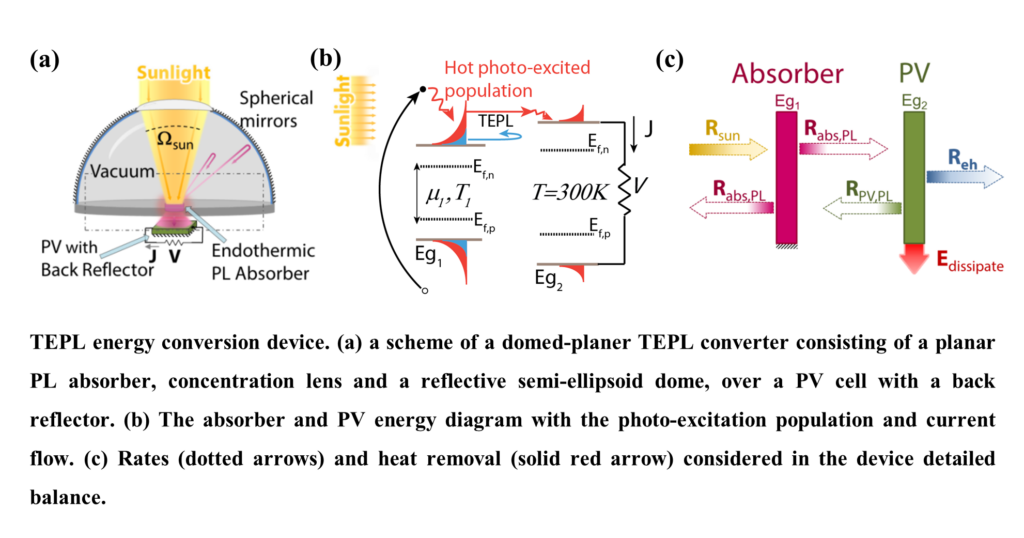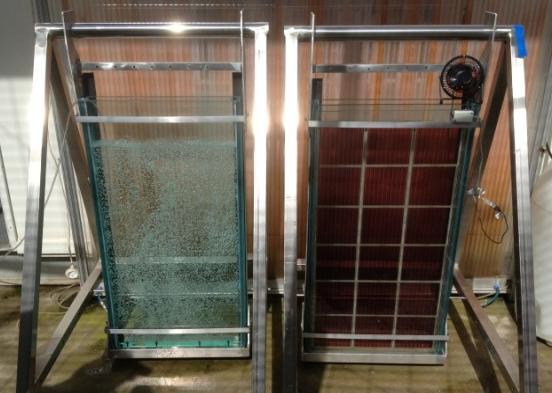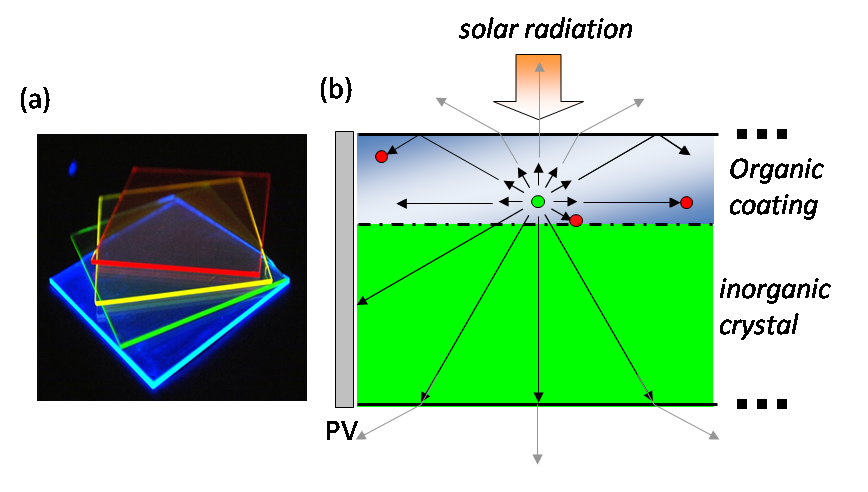Efficient tenfold up-conversion through steady-state non thermal-equilibrium excitation
We develop and examine a novel up-conversion mechanism, in which 10.6μm radiation from a CO2 laser is converted into 1μm radiation at extremely high efficiency of up to 4%. The up-conversion is performed using silica samples doped with rare-earth ions such as Ytterbium and Neodymium. Lately, we conducted an experiment proving the process to be of a non-thermal-equilibrium nature: the up-converted radiation of a fiber sample under CO2 excitation was measured to far exceed that of the same sample under thermal equilibrium (inside a micro-heater, in the picture).

Efficient tenfold up-conversion
Thermal light managment for photovoltaics
By light management, the solar spectrum which impinges on a photovoltaic cell (PV) is spectrally modified to best fit the PV bandgap, for maximal efficiency. Our thermal light management approach is the use of thermalization losses in semiconductor materials to enhance photoluminescence processes through heat-assisted photoluminescence. This way, heat that would otherwise be wasted is recycled back to the emitting material to thermally enhance photon emission. These band-gap photons are then harvested by a conventional solar cell, yielding improved efficiencies beyond the SQ limit, of up to 70% for an ideal device.

Solar laser
We investigate a novel configuration of solar pumping, which provides efficient conversion of incoherent, spectrally broad sunlight into a coherent monochromatic light beam. This method utilizes Cascaded Energy Transfer (CET) for solar powered lasers. In this concept micro-cavities are coated with a combination of organic dyes, forming a cascaded combination of near and ultimately far field energy transfer. Absorption and emission spectra of the dyes form an energetic cascade and each dye is chosen such that its emission matches the absorption peak of the next material. These properties reduce material-losses in the cavity and transforms incoherent light to coherent light. As a proof of concept we have demonstrated a solar powered laser with a record low power threshold of an equivalent solar lasing threshold of 725 suns. The demonstration has been done utilizing Cd:Se quantum dots (QD) with peak emission at 585nm as a Nd3+ sensitizer in 2-stage CET. Experimental results with the organic thin film yield higher pumping efficiency and suggest that solar powered laser with threshold of below 10 suns is feasible, which is currently the ultimate goal of our project. This project is being done in collaboration with Massachusetts Institute of Technology.

The solar powered laser concept – a rectangular shape Nd3+:YAG crystal coated by organic luminescent materials for energy transfer
A novel optical device for the culture of lipid rich algae
Although lipid rich algae have been identified as a prospect feedstock for large scale production of biodiesel, such a source has not yet reached competitive market prices, and has yet been deemed as a viable energy source. In collaboration with Prof. Zvy Dubinsky and his group in Bar-Ilan University, we are developing a system that will convert the solar spectrum to the spectrum best suited for maximal lipid generation from algae, and thus increase the solar photon flux to biodiesel yield in each crop. Our preliminary results indicate that an order of magnitude enhancement in biodiesel production is in reach within this research.


The algae growth process; courtesy of Bar-Ilan University
Efficient photon cutting for Photovoltaics
High energy photons, in the UV and blue parts of the solar spectrum, are twice as energetic as the bandgap of Si crystal that constitutes the commonly sold PV’s. This means that more than half of the more energetic part of the solar spectrum is wasted on heat when converted to electrical current.
We are researching a method for efficiently harvesting the energetic photons at the relevant wavelengths, and “splitting” them to photons with energies best suited to the Si bandgap.

LSC for photon cutting scheme
